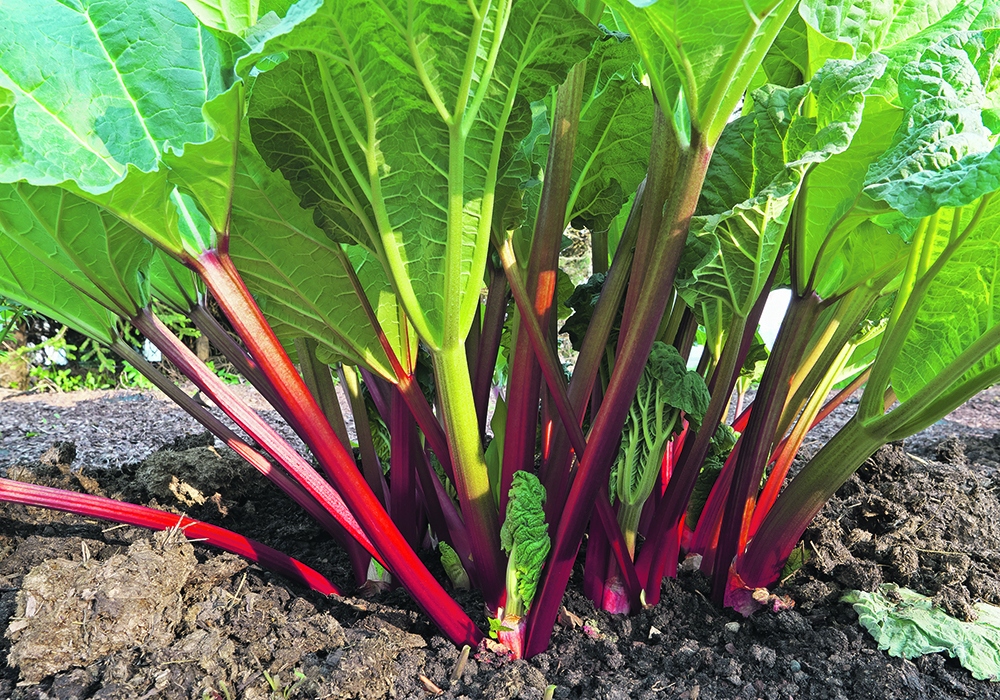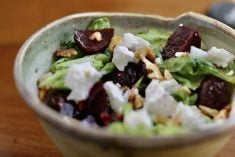This virtually indestructible plant’s desire for space can make it difficult to manage, but the bounty is hard to ignore
The ancient prophet Isaiah aptly described a typical rhubarb patch when he wrote, “in the day you plant it you carefully fence it in … but the harvest will be a heap.”
Truer words were never spoken.
Rhubarb is practically indestructible. It can be pounded to a pulp by a July hailstorm, flattened by an August tornado, wilted to a stringy pith by a heat wave, flooded out in spring by runoff and frozen stiff in winter, yet it always recovers.
On the farm where I grew up, the rhubarb patch started as one solitary hill in the corner of the garden — until the day someone forgot to close the gate. It may be the “little foxes that spoil the vines,” but it was our big old brood sow that uprooted the rhubarb.
We found her sitting in the scattered remains of the patch, munching the stalks while the juice dribbled down her jowls.
My mother despaired of ever again having rhubarb, but a few weeks later, not one, but six or more hills of rhubarb sprang up at random. Thereafter we endured a steady diet of the stuff —rhubarb pie, rhubarb pudding, rhubarb cake (upside down and right side up) rhubarb relish, rhubarb jelly and rhubarb jam.
When I was absolutely famished, I would even compromise my principles and eat raw stalks of rhubarb dipped in sugar — lots of sugar. And still the rhubarb patch never got any smaller.
One thing was certain. If I ever had a garden of my own, I was not going to cultivate rhubarb.
Ignoring it proved counterproductive. I soon learned that deliberately excluding rhubarb from my garden patch was paramount to committing horticultural apostasy. Such a sin of omission was viewed with raised eyebrows.
In a vain attempt to point out the error of my ways, friends and neighbours loaded me down with their surplus, and piles of rhubarb landed on our back step.
The way of the transgressor is hard. As the porch slowly disappeared from view beneath a mountain of rhubarb stalks, I was forced to capitulate. Friend hubby could plant one root.
The thing flourished and grew despite my neglect. The following spring, I sent our teenage son to cultivate the garden. What did he do with the tiller but accidentally uproot the hill of rhubarb — sent it flying in all directions at once. As a mangled piece of rhubarb whipped past the kitchen window, my glee knew no bounds.
Alas, whatever a man sows he will also reap. Wherever the rhubarb fell to earth, it took root and I had to deal with the consequences.
From the moment the tender young stalks of red rhubarb came poking through the ground until they reached the size of green broom handles, friend hubby kept toting them into the kitchen like stove wood.
Hard pressed to make use of it all, I added it to every available recipe, until our son finally complained, saying “there is no such thing in this household as a purebred pie. They are all adulterated with rhubarb.”
I had the strange feeling that history was repeating itself.
On the other hand, redemption was as near at hand as Grandma. The eternal optimist, she would lovingly heap some finely chopped rhubarb in a pie shell, snow it under with sugar, sprinkle the top crust with cinnamon and slide it into the oven.
Before long the pie was turning a golden brown and the rhubarb juice was bubbling up through the little slits in the top crust. Just when everybody’s taste buds were on the edge of anticipation, the smoke detector would go off.

What started as a few harmless bubbles had erupted into a full-fledged volcano, with rhubarb lava flowing up and over the edges of the pie and dribbling onto the hot oven floor. As the sugary syrup hardened into pools of black carbon, billows of smoke poured forth from the oven.
Gasping for air, the family ran to open windows and doors, and our shrieking fire alarm all but deafened us.
Even though Grandma turned down the oven as low as she dared, the pie periodically insisted on spewing forth its surplus juice, with the smoke detector faithfully broadcasting each new eruption like a seismometer recording seismic tremors.
At last the pie was baked and the house aired out. As the family gathered to devour that warm rhubarb pie with its sugary crust smothered in vanilla ice cream, we unanimously decided a second pie would certainly be in order.
Long before the molten lava on the oven floor had turned to volcanic ash, I concluded, reluctantly, that the rhubarb patch was here to stay.















